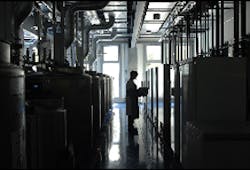Spectrograph probes cryopreserved samples
Human biological samples are collected, stored, and used for a variety of purposes with their biological integrity ensured by cryopreservation at temperatures below -137°C. These samples are almost always unique and irreplaceable but, until now, it has been impossible to quality assure the material before use to check that thermal damage has not occurred.
Now, a team from Saarland University's (Saarbrücken, Germany) Biophysics and Cryotechnology department in Germany led by Professor Heiko Zimmermann has developed a new probe specifically for monitoring and investigating cryopreserved samples.
At the heart of their new probe is a fiber-borne imaging spectrograph from Andor (Belfast, UK) consisting of a Shamrock 303i imaging spectrograph with an iDus back-illuminated deep-depletion (‘BR-DD’) CCD camera.
Using the probe, they confirmed unambiguously the detection of ice crystals in vitreous samples in situ at temperatures below -120°C. Known as devitrification and leading almost inevitably to loss of the complete sample, this is a common side effect of transient warming events, such as the clumsy withdrawal of neighboring samples.
Professor Zimmermann runs EuroCryo, Europe's largest research biobank and his work in detecting and monitoring changes in cryopreserved samples may be the first stage in establishing a recognized technique for retrospective proof of the absence of physical and chemical changes inside the sealed sample due to devitrification.
Related items from Vision Systems Design that you might also be interested in.
1. Cameras help image live biological specimens in 3-D
Researchers at laboratories in Europe and the US have created new microscopes capable of imaging rapid biological processes in thick samples that can be used to study live biological specimens.
2. Hyperspectral imaging system detects defects on apples
A researcher at the University of Maryland (College Park, MD, USA) has shown that a hyperspectral image processing system can identify accurately 95 percent of the defects on the surface of Red Delicious apples.
-- Dave Wilson, Senior Editor, Vision Systems Design
